Table of Contents
Creating a successful website is crucial for any business looking to establish an online presence. Whether you are a startup or an established company, exploring innovative website ideas can help you engage your audience and drive business growth.
In this article, we will explore seven website ideas for business that can inspire you to take your online presence to the next level.
1. E-Commerce Store: Selling Products Online
Starting an e-commerce store can be an exciting and profitable venture. The first step in this journey is to carefully plan and execute your strategy to ensure success. One of the most important aspects of this process is choosing the right products to sell. Selecting items that are in demand and have a clear target audience will increase your chances of building a successful e-commerce business.
In addition to product selection, the design of your online storefront plays a crucial role. An attractive, user-friendly website will draw customers in and encourage them to make purchases. Furthermore, implementing secure payment gateways is essential to building trust and providing a safe shopping experience for your customers.
Dropshipping Sites Recommendations
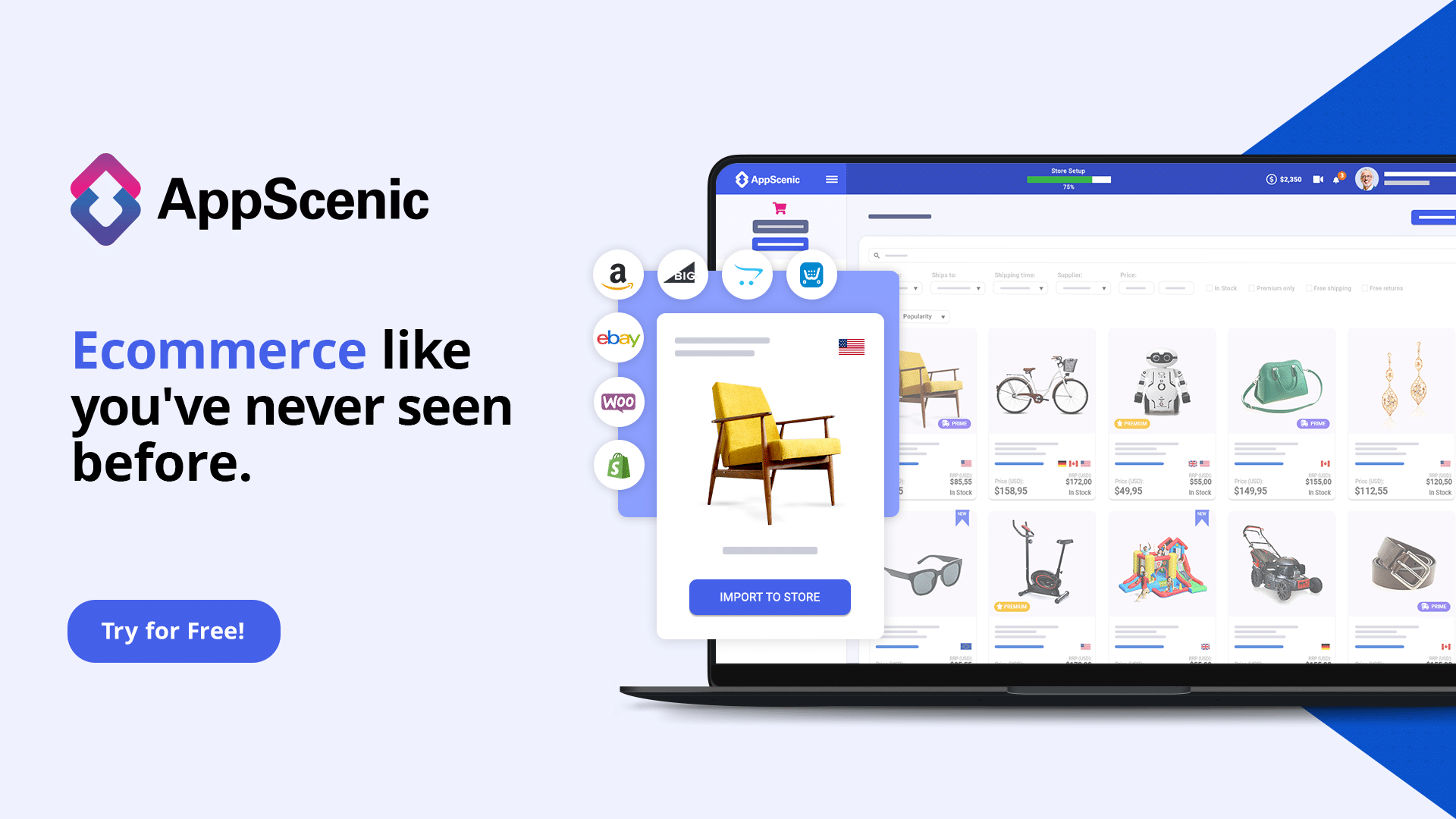 Appscenic
| 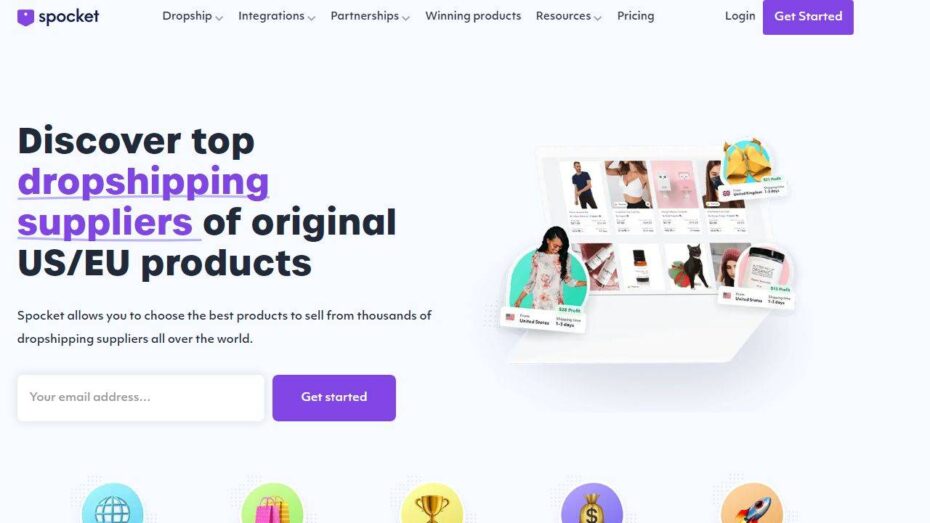 Spocket
|
Choosing the Right Products to Sell
Choosing the right products to sell is a critical decision that can make or break your e-commerce store. I recommend starting with market research to identify trending products and understand what your potential customers are looking for. Tools like Google Trends and social media insights can be very useful in this phase.
Once you have a list of potential products, my suggestion is to evaluate them based on factors such as demand, competition, and profit margins. I advise against entering overly saturated markets unless you have a unique selling proposition that sets your products apart. Instead, focus on niches where you can offer something different or superior.
I would say it’s also beneficial to test the waters before committing to large inventory purchases. Consider using dropshipping or purchasing small quantities to gauge interest. This approach minimizes risk and provides valuable feedback from customers.
My recommendation is to continuously monitor market trends and customer feedback to adapt your product offerings. This flexibility will help you stay relevant and competitive in the ever-changing e-commerce landscape.
Designing an Attractive Online Storefront
Designing an attractive online storefront is crucial for converting visitors into customers. I suggest starting with a clean, professional design that reflects your brand identity. Choose a color scheme and typography that align with your brand values and appeal to your target audience.
One of the most important elements of your storefront is the layout. My advice is to make navigation intuitive and straightforward, allowing customers to easily find what they’re looking for. Organize products into clear categories and use high-quality images to showcase them.
I point out that having a responsive design is essential. Your website should provide a seamless experience across all devices, including smartphones and tablets. A mobile-friendly site not only improves user experience but also boosts your search engine rankings.
I believe that incorporating customer reviews and testimonials can significantly enhance the credibility of your store. Positive feedback from previous customers can reassure new visitors and encourage them to make a purchase.
Implementing Secure Payment Gateways
Implementing secure payment gateways is vital for building trust with your customers and ensuring their sensitive information is protected. I strongly believe that offering multiple payment options can improve the shopping experience and cater to different customer preferences.
My suggestion is to use well-known and trusted payment gateways such as PayPal, Stripe, or Square. These platforms offer robust security features and are widely recognized by consumers, which can enhance their confidence in your store.
I recommend ensuring that your website is SSL certified. An SSL certificate encrypts data transferred between your website and your customers, providing an additional layer of security. This certification is also a ranking factor for search engines, further benefiting your e-commerce store.
I advise keeping the checkout process as simple and streamlined as possible. A complicated or lengthy checkout can lead to cart abandonment. Offer guest checkout options and minimize the number of steps required to complete a purchase.
My advice is to stay informed about the latest security practices and regularly update your payment systems. Cybersecurity threats are constantly evolving, and maintaining up-to-date security measures is essential for protecting your customers and your business.
2. Service-Based Website: Showcasing Expertise
Creating a service-based website is an excellent way to showcase your expertise and attract potential clients. By effectively highlighting your key services, building a compelling portfolio, and incorporating customer testimonials, you can create a strong online presence that drives business growth.
Most importantly, your website should communicate your unique value proposition clearly. My suggestion is to focus on what sets your services apart from the competition. Additionally, maintaining a professional tone throughout your content will help establish credibility and trust with your audience.
Web Hosting Recommendations
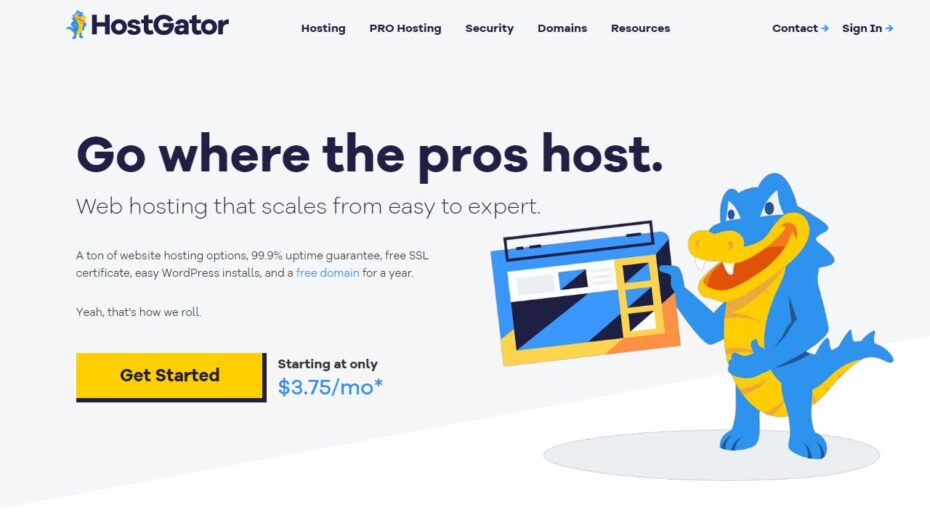 Hostgator
| 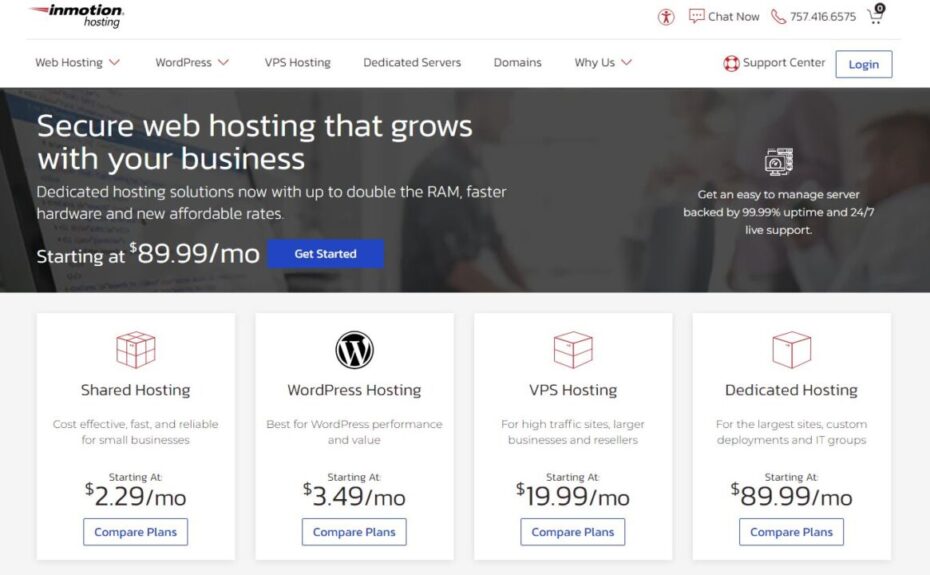 Inmotion
| 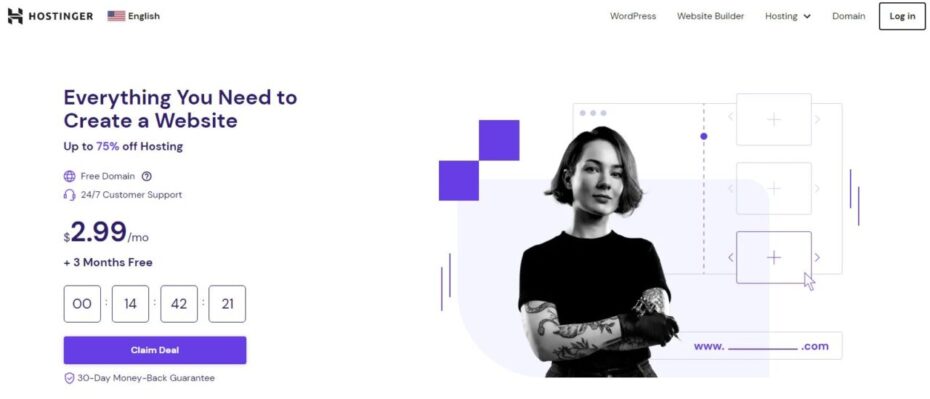 Hostinger
|
Highlighting Key Services
Highlighting your key services is essential for attracting the right clients. I recommend starting with a detailed overview of each service you offer. Use clear and concise language to explain the benefits and outcomes clients can expect.
My advice is to use bullet points or short paragraphs to make the information easily digestible. For instance, if you offer consulting services, outline the specific areas of expertise you cover, such as strategic planning, market analysis, or project management. This approach helps potential clients quickly understand how you can meet their needs.
I point out that visuals can greatly enhance your service descriptions. Incorporating icons, images, or even short videos can make your content more engaging and visually appealing. I suggest including real-life examples or case studies to demonstrate the effectiveness of your services.
I believe that transparency is key. Clearly state your pricing structure and any additional costs. This honesty can help build trust and reduce potential misunderstandings with clients.
Building a Portfolio of Work
Building a portfolio of work is a powerful way to showcase your expertise and past successes. I would say that an organized and visually appealing portfolio can significantly impact a potential client’s decision to hire you.
My recommendation is to include a variety of projects that highlight different aspects of your skills and experience. Each project should have a brief description, the challenges faced, and the results achieved. This detailed approach provides a comprehensive view of your capabilities.
I suggest using high-quality images or screenshots to visually represent your work. These visuals should be accompanied by concise, informative captions. For instance, if you are a web designer, show before-and-after images of websites you have revamped.
I strongly believe that including client names (with their permission) and industry-specific projects can add credibility to your portfolio. Highlighting recognizable clients or successful projects in well-known industries can make a significant impression.
I advise regularly updating your portfolio to reflect your most recent and relevant work. This practice ensures that potential clients see your latest projects and understand that you are actively engaged in your field.
Incorporating Customer Testimonials
Incorporating customer testimonials is an effective way to build trust and showcase the positive experiences of your previous clients. I think testimonials provide social proof and can significantly influence potential clients’ decisions.
I suggest reaching out to satisfied clients and asking for detailed testimonials. My advice is to provide them with a few guiding questions to ensure the testimonials are comprehensive and highlight specific aspects of your services.
I point out that displaying testimonials prominently on your website, such as on the homepage or dedicated testimonial page, can maximize their impact. Including a mix of text testimonials and video testimonials can add variety and make the content more engaging.
My recommendation is to ensure that each testimonial includes the client’s full name, company, and position if possible. This information adds authenticity and credibility. If clients are comfortable, including their photos can further personalize the testimonials.
Most importantly, regularly update your testimonials to reflect recent feedback. Fresh testimonials indicate that you are actively working with clients and consistently delivering high-quality services. This continuous update helps maintain the relevance and trustworthiness of your website.
3. Blog: Sharing Industry Insights and News
Creating a blog to share industry insights and news can significantly boost your business’s online presence. It allows you to position yourself as a thought leader and engage with your audience on relevant topics. By consistently providing valuable content, you attract and retain readers, which can lead to increased traffic and potential leads for your business.
Most importantly, maintaining a blog requires dedication and a deep understanding of your industry. I recommend focusing on current trends and updates within your field to keep your content fresh and engaging. By doing so, you not only inform your audience but also demonstrate your expertise and credibility.
Creating Valuable Content for Your Audience
Creating valuable content for your audience is essential for a successful blog. I suggest starting by understanding your audience’s needs and interests. Conduct surveys, engage with readers through comments, and use analytics to determine what topics resonate most with your audience.
I believe incorporating various content formats, such as articles, videos, and infographics, can enhance engagement. My advice is to provide actionable insights and practical tips that readers can apply in their own businesses. This approach not only adds value but also establishes your blog as a go-to resource for industry knowledge.
I would say it’s important to keep your content well-researched and factual. My recommendation is to cite reliable sources and include data to support your points. This practice builds trust and authority, encouraging readers to rely on your blog for accurate information.
Lastly, I strongly believe that regular updates are key to retaining your audience. Keep your content fresh and relevant by posting regularly and updating old posts with new information. This strategy not only improves your SEO but also keeps readers coming back for more.
Strategies for Driving Blog Traffic
Driving traffic to your blog requires a mix of strategies tailored to your audience. I recommend using social media platforms to share your content and engage with your followers. Posting regularly and interacting with your audience can significantly increase visibility and drive traffic to your blog.
My suggestion is to optimize your blog posts for search engines. Use relevant keywords naturally throughout your content, create compelling meta descriptions, and ensure your blog is mobile-friendly. These SEO practices can help your blog rank higher in search results, attracting more organic traffic.
Collaborating with other bloggers and influencers can also boost your traffic. I advise reaching out for guest posting opportunities or collaborations, which can introduce your blog to new audiences. This tactic not only increases visibility but also enhances your blog’s credibility.
I believe leveraging email marketing can drive consistent traffic to your blog. Encourage visitors to subscribe to your newsletter and send regular updates with links to your latest posts. This keeps your audience engaged and informed about new content.
Monetizing Your Blog Through Ads and Affiliates
Monetizing your blog through ads and affiliates can provide a steady income stream. My recommendation is to start with affiliate marketing by promoting products or services that align with your blog’s niche. Choose affiliate programs that offer products relevant to your audience.
I suggest creating honest and detailed reviews of the products you promote. Transparency builds trust with your audience, increasing the likelihood of conversions. My advice is to focus on products you genuinely believe in to maintain authenticity.
Incorporating display ads is another effective monetization strategy. Platforms like Google AdSense allow you to earn revenue based on ad clicks or impressions. However, I point out that it’s important to balance ads with content to avoid overwhelming your readers.
Exploring other monetization methods, such as sponsored posts or selling digital products, can diversify your income. I recommend offering e-books, online courses, or exclusive content for a fee. These strategies can provide additional value to your audience while generating revenue for your blog.
Membership Site: Offering Exclusive Content
Creating a membership site can be a powerful way to monetize your content and provide exclusive value to your most dedicated audience. By offering premium content behind a paywall, you can generate a steady stream of income while fostering a community of loyal members. This approach allows you to leverage your expertise and deliver high-quality, exclusive content that keeps members coming back for more.
Most importantly, a membership site requires careful planning and consistent content updates. I suggest focusing on delivering unique and valuable content that your members can’t find elsewhere. This could include in-depth articles, exclusive videos, webinars, or downloadable resources that cater specifically to your audience’s interests and needs.
Developing Premium Content for Members
Developing premium content for your members is the cornerstone of a successful membership site. I recommend starting by identifying the specific needs and interests of your target audience. Conducting surveys or engaging with your community can provide insights into what they value most.
I believe it’s crucial to create content that offers genuine value and solves real problems for your members. My advice is to focus on quality over quantity, ensuring that each piece of content is well-researched, insightful, and actionable. This not only keeps your members satisfied but also reinforces the value of their subscription.
To add variety and keep members engaged, I suggest incorporating different content formats such as video tutorials, live Q&A sessions, and downloadable resources. My recommendation is to maintain a content calendar to ensure consistent updates and keep your members looking forward to new material.
Lastly, I strongly believe in the power of feedback. Regularly seek input from your members to understand what they find most valuable and where you can improve. This ongoing dialogue helps you tailor your content strategy to better meet their needs and expectations.
Setting Up Subscription Plans
Setting up subscription plans for your membership site involves careful consideration of pricing and value propositions. I advise offering multiple tiers of membership to cater to different levels of commitment and budget. This approach allows you to attract a broader audience and provide options for upgrading as members see the value in your content.
My suggestion is to clearly outline the benefits and exclusive content available at each subscription level. Transparency helps potential members understand what they are paying for and makes it easier for them to choose the plan that best suits their needs.
I recommend offering a free trial or a money-back guarantee to reduce the risk for new subscribers. This can encourage hesitant users to give your membership site a try without feeling locked in. Once they experience the value, they are more likely to continue with a paid subscription.
I point out that integrating a seamless payment system is crucial for a smooth user experience. Ensure that your subscription process is straightforward and secure, providing multiple payment options to accommodate your members’ preferences.
Engaging Members with Exclusive Offers
Engaging your members with exclusive offers and perks can enhance their experience and increase retention rates. I suggest providing special discounts, early access to new content, or members-only events to create a sense of exclusivity and reward loyalty.
My recommendation is to personalize these offers based on member activity and preferences. Personalized incentives can make members feel valued and appreciated, fostering a stronger connection to your membership site.
I believe regular communication is key to keeping members engaged. Send out newsletters, updates, and personalized messages to keep them informed about new content and upcoming events. This keeps your membership site top-of-mind and encourages ongoing participation.
Finally, I strongly believe in building a community within your membership site. Encourage interaction through forums, live chats, or social media groups where members can connect, share insights, and support each other. This sense of community can significantly enhance the overall value of your membership site and keep members coming back for more.
Portfolio Website: Displaying Creative Work
Creating a portfolio website is an essential step for professionals in creative fields such as design, photography, writing, and more. A well-crafted portfolio showcases your skills and expertise, allowing potential clients to see the quality of your work at a glance. It’s your digital business card, providing a platform to highlight your best projects and accomplishments.
Most importantly, your portfolio website needs to be organized and visually appealing. I recommend focusing on a clean and intuitive layout that makes it easy for visitors to navigate through your projects. Ensure that each piece of work is presented clearly, with high-quality images and concise descriptions that explain your role and the project’s impact.
Organizing and Presenting Your Projects
Organizing and presenting your projects effectively is key to a successful portfolio website. I advise categorizing your work into different sections based on project type, industry, or client. This helps visitors quickly find relevant examples of your work and demonstrates your versatility.
My recommendation is to include detailed descriptions for each project. Explain the project’s objectives, your specific contributions, and the results achieved. This provides context and showcases your problem-solving skills and expertise. I believe that including testimonials or feedback from clients can add credibility and make your portfolio more compelling.
Another tip is to keep your portfolio updated regularly. I suggest reviewing your portfolio every few months to add new projects and remove older ones that no longer represent your best work. This ensures that your portfolio remains current and relevant to potential clients.
Attracting Clients with Your Portfolio
Attracting clients with your portfolio requires more than just showcasing your work; you need to make it easy for potential clients to contact you. I recommend including clear calls-to-action throughout your site, encouraging visitors to reach out for inquiries or collaborations.
I think having a dedicated contact page with a simple form, email address, and social media links can make a significant difference. My advice is to respond promptly to inquiries to demonstrate your professionalism and eagerness to work with new clients. Additionally, I suggest optimizing your portfolio website for SEO to increase its visibility in search engine results, attracting more organic traffic.
I point out that networking is also crucial. Share your portfolio on social media platforms, join relevant online communities, and participate in industry events to increase your exposure. The more people who see your work, the higher your chances of attracting new clients.
Using Visuals to Enhance Your Work
Using visuals to enhance your work is essential in making your portfolio stand out. High-quality images, videos, and graphics can make a powerful impression on visitors, showcasing your creativity and attention to detail. I recommend investing in professional photography or learning basic photo editing skills to ensure your visuals are top-notch.
My suggestion is to use a mix of static images and dynamic content such as video reels or interactive elements. This variety can make your portfolio more engaging and memorable. For instance, if you’re a web designer, including live previews or links to the websites you’ve created can give potential clients a better understanding of your capabilities.
I believe that consistency is key when it comes to visuals. Ensure that all images and graphics have a uniform style and quality, reflecting your brand’s identity. My advice is to create a cohesive visual experience that aligns with your professional image and the type of clients you aim to attract.
Lastly, I strongly believe in the importance of accessibility. Make sure your visuals are optimized for fast loading times and are responsive across different devices. This ensures that your portfolio provides a seamless experience for all visitors, regardless of how they access your site.
Educational Website: Providing Online Courses
Creating an educational website to provide online courses is a powerful way to share your expertise and generate revenue. By offering valuable and structured learning experiences, you can attract a wide audience of learners eager to acquire new skills. This approach not only helps individuals grow but also establishes you as an authority in your field.
Most importantly, the success of your educational website depends on the quality and relevance of your courses. I suggest focusing on topics that are in high demand and have a clear target audience. This ensures that your courses will attract the right learners and provide them with the skills they need.
Choosing Course Topics That Sell
Choosing course topics that sell is a crucial step in developing an educational website. I recommend starting with thorough market research to identify trends and gaps in your field. Look at what competitors are offering and where there might be opportunities to provide something unique.
I believe that understanding your audience’s needs and interests is key. My advice is to survey potential students or engage with them on social media to gather insights into what they want to learn. This direct feedback can guide you in selecting topics that will be both popular and impactful.
I point out that it’s beneficial to focus on evergreen topics that have long-term relevance. While trendy subjects can attract quick attention, courses on foundational skills or ongoing industry needs will continue to draw students over time. This strategy helps in building a sustainable educational platform.
Lastly, I suggest creating a mix of introductory and advanced courses. This allows you to cater to beginners as well as more experienced learners, expanding your potential market. Offering a progression of courses can also encourage repeat enrollments and long-term engagement with your platform.
Building an Effective Learning Platform
Building an effective learning platform is essential for delivering your online courses successfully. I recommend using a reliable Learning Management System (LMS) that offers a user-friendly interface and robust features. An intuitive platform ensures that learners can easily navigate through courses and access materials without frustration.
My suggestion is to incorporate various types of content, such as video lectures, interactive quizzes, and downloadable resources. This variety keeps learners engaged and caters to different learning styles. I believe that including practical assignments and real-world projects can enhance the learning experience and help students apply what they’ve learned.
I advise paying attention to the mobile compatibility of your platform. Many learners prefer accessing courses on their smartphones or tablets, so ensuring a seamless mobile experience is crucial. This flexibility can increase enrollment and satisfaction among your students.
I strongly believe in the importance of community and support within your learning platform. Offer forums, live Q&A sessions, and direct messaging options where students can interact with instructors and peers. This sense of community fosters collaboration and motivation, leading to better learning outcomes.
Marketing Your Courses to Reach a Wider Audience
Marketing your courses effectively is vital to reaching a wider audience and maximizing enrollments. I suggest starting with a well-defined marketing strategy that includes a mix of organic and paid tactics. Social media platforms, email marketing, and search engine optimization (SEO) are powerful tools for promoting your courses.
I recommend creating engaging content to attract potential learners. Blog posts, free webinars, and video previews can showcase your expertise and give a taste of what students can expect. My advice is to use these channels to build a following and drive traffic to your educational website.
I believe leveraging testimonials and success stories from past students can greatly enhance your marketing efforts. Positive feedback serves as social proof and can persuade prospective students to enroll. Highlight these testimonials on your website and in your promotional materials.
Lastly, I suggest offering limited-time discounts or bundles to incentivize enrollments. Special offers can create a sense of urgency and encourage more people to sign up. Additionally, partnering with influencers or industry experts can help you tap into their audiences and expand your reach.
Affiliate Marketing Site: Recommending Products
Creating an affiliate marketing site focused on recommending products can be a highly lucrative venture. By carefully selecting and promoting relevant products, you can earn commissions for each sale generated through your affiliate links. This approach not only helps you monetize your site but also provides value to your audience by guiding them to quality products.
Most importantly, the success of an affiliate marketing site depends on building trust with your audience. I suggest being transparent about your affiliate relationships and only promoting products you genuinely believe in. This authenticity can enhance your credibility and encourage more conversions.
Selecting Profitable Affiliate Programs
Selecting profitable affiliate programs is a critical step in building a successful affiliate marketing site. I recommend starting with thorough research to identify programs that offer competitive commission rates and have a good reputation. Look for programs that align with your niche and cater to the interests of your audience.
I believe that it’s important to evaluate the product quality and the company’s reliability. My advice is to choose affiliate programs from well-known brands that are known for their high-quality products and excellent customer service. This ensures that your audience will have a positive experience, which can lead to repeat purchases and long-term loyalty.
I point out that considering the cookie duration of affiliate programs is essential. Longer cookie durations mean that you can earn commissions even if the purchase is made days or weeks after the initial click. This can significantly increase your earning potential.
Lastly, I suggest joining multiple affiliate programs to diversify your income streams. This strategy reduces dependency on a single program and allows you to compare which ones perform best for your site. Keep track of your earnings and adjust your focus accordingly.
Writing Engaging Product Reviews
Writing engaging product reviews is a key component of an affiliate marketing site. I recommend providing honest, in-depth reviews that highlight the features, benefits, and potential drawbacks of each product. This comprehensive approach helps your audience make informed purchasing decisions.
My suggestion is to include personal experiences and anecdotes in your reviews. Sharing how you or someone you know benefited from the product can add a personal touch and make the review more relatable. I believe that using high-quality images and videos can further enhance your reviews and provide a better understanding of the product.
I advise structuring your reviews with clear headings, bullet points, and concise paragraphs to make them easy to read. Highlight key points and use a consistent format to help your audience quickly find the information they need. My recommendation is to include a call-to-action at the end of each review, encouraging readers to purchase through your affiliate link.
I strongly believe that comparing similar products in your reviews can add value. This comparison helps your audience see the differences and choose the product that best meets their needs. Additionally, providing links to these alternative products can increase your chances of earning commissions.
Optimizing Your Site for Affiliate Conversions
Optimizing your site for affiliate conversions is essential for maximizing your earnings. I recommend focusing on user experience (UX) and ensuring that your site is easy to navigate. A well-designed site encourages visitors to stay longer and explore more content, increasing the likelihood of conversions.
I suggest using clear and compelling calls-to-action (CTAs) throughout your site. These CTAs should guide visitors to take the desired action, such as clicking on your affiliate links. I believe that placing CTAs strategically within your content and making them visually appealing can significantly improve conversion rates.
My advice is to regularly update your content to keep it fresh and relevant. This not only helps with SEO but also shows your audience that you are actively maintaining your site. I point out that integrating testimonials and user reviews can build trust and credibility, making visitors more likely to convert.
Lastly, I strongly believe in the importance of tracking and analyzing your site’s performance. Use analytics tools to monitor traffic, click-through rates, and conversions. This data provides insights into what works and what doesn’t, allowing you to make informed decisions and continuously improve your site’s effectiveness.
Conclusion
Implementing these website ideas can significantly enhance your business’s online presence and drive growth. Choose the concept that aligns best with your business goals and start building a website that not only attracts visitors but also converts them into loyal customers.











